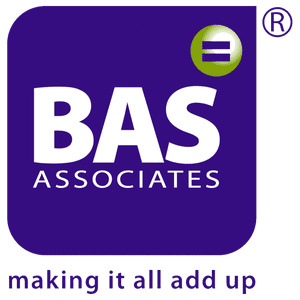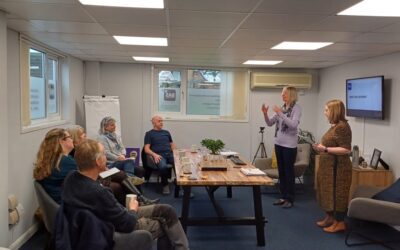Understanding your Profit & Loss (P&L) Statement
Your Statement of Profit & Loss (P&L), or Income Statement, displays the overall performance of your business over a specific period. Usually this is a month, quarter, or financial year.
Within seconds you should be able to understand if your business is profitable or not. So, a good understanding of your P&L will not only help you communicate your financial results, it will also give you quick insights into the financial health of your business putting you in a better position to make informed business decisions within minutes.
Your P&L begins with the Gross Profit from your Trading Account then lists all overhead expenses, giving you the Net Profit. Most software combines the Trading Account and the Profit & Loss into one report, so the items from the Trading Account appear at the top of the Profit & Loss.
Depending on your business, your P&L will include some, if not all, of the following elements:
- Revenue (or Sales)
- Cost of Goods Sold (or Cost of Sales)
- Selling, General & Administrative Expenses
- Marketing & Advertising
- Technology/Research & Development
- Interest
- Tax
- Net Profit
The basic format for your P&L calculations are:
Net Profit = Sales – Cost of Sales + Other Income – Expenses – Tax
Breaking that down a little further, here are the top-level descriptions of the above formula and when they should, or shouldn’t, be included:
Sales: If Trading Account not reported separately
Cost of sales: If Trading Account not reported separately
Other Income: Interest received, dividends received, rental income
Expenses: this can be broken down into sections, e.g. admin expenses, selling expenses, finance expenses etc.
Tax: Amount of tax payable on Net Profit Before Tax.
In the annual financial statements, depreciation is also included in a P&L. Your Net Profit (or loss) is the amount left over after all expenses have been paid, including tax. Unlike the Trading Account, your Profit & Loss shows all fixed costs. These are the costs which remain the same no matter what your sales level is, e.g. electricity, office expenses, bad debts, accounting fees, vehicle expenses, depreciation, etc.
If you want to dive deeper into the numbers provided within your P&L, here are two key ratios to spend some time understanding, along with why its beneficial to calculate these:
Let’s start with Net Profit Percentage. Understanding this metric will make it crystal clear what the remaining profit is after all costs of production, administration and financing have been deducted from sales and taxes have been calculated.
1.Net Profit Percentage = (Net Profit / Sales) * 100
This is the amount of Sales available as profit after all expenses, including tax, have been paid. For example, if Net Profit is £100,000 and Sales are £1,000,000, the Net Profit Percentage is 10%, so you make 10p profit for every £1 of sales.
The higher the Net Profit Percentage, the better, as it shows how profitable your business is. To increase your Net Profit Percentage, review your fixed costs and find areas to save or increase your sales or margin.
Moving onto overhead ratios some overhead expenses can be reduced, and others avoided completely. Understanding your overhead ratios will make it clearer what the actual operation cost of doing something is compared to the income it provides.
2. Overhead Ratio(s) = (Overhead Cost / Sales) * 100
This shows the percentage of Sales spent on Overheads. The goal is to have a low Overhead Ratio; spending less on Overheads and retaining more as profit. For example, if total Overheads are £150,000 and Sales are £1,000,000, the Overhead Ratio is 15%, so for every £1 of sales, 15p is spent on Overheads.
If you’re spending £10,000 per year on advertising, check if 1% is in line with industry benchmarks for your business (or compared to the percentage in prior years or in your budget).
To reduce your Overhead Ratio, go through each overhead expense and determine whether it could be reduced or cut completely. For example, online meetings instead of in-person meetings will likely save a significant amount.
Be careful when cutting Overheads, as some may indirectly contribute to your profit. For example, before cutting advertising costs from 1% to 0.5%, establish the level of sales generated from current advertising. Spending 1% may still be the right decision, but the £10,000 could be better directed at your most effective marketing channel.
So, now we have covered most of detail within your P&L report, here are our 6 top tips to maximise the insights provided to you by your P&L report:
- Profit is a driver of business value. Most businesses are valued using a multiple of profit (usually Earnings Before Interest and Tax or EBIT) so, the higher the profit, the higher the business value.
- Accounting / bookkeeping fees should be an investment, not a cost. If you view what you pay us as a cost, that cost ought to be cut; but if you see us as a strategic partner, helping you run a more successful business, then our fees are an investment in your business, not a cost to cut.
- Fixing the Balance Sheet can fix the Statement of Profit & Loss too. Looking at the Profit & Loss in isolation won’t reduce certain costs. For example, slow collection of debtors may mean a higher overdraft and more interest, increasing costs in your Profit & Loss. Likewise, you may be incurring bad debts or debt collection costs. Having loans structured incorrectly could mean you pay more interest than necessary. For example, an overdraft carries a higher interest rate than a term loan, and banks usually charge less than finance companies.
- Make sure you’re accounting for a fair wage to working owners. Consider what you’re being paid for the hours you work. You may be making a profit, but if you divide that by the total hours worked, you may be working for below minimum wage. Paying yourself a fair wage ensures the true cost of running the business is reported. There are tax implications to consider, so talk to us about the best way to record your effective wage cost.
- Tax savings increase your profit and cashflow. Talk to us about strategies to legitimately minimise your tax.
- Don’t confuse profits with cash! Profits on your P&L report doesn’t mean you have cash in your bank account. One of the reasons for this is because your accountant will record sales in the P&L report even if they were sold on account. So, this means that transaction isn’t cash yet it’s accounts receivable, which is very different from the cash from that transaction being in your bank account.
So, whilst your P&L is a critical report to understand your business’s financial position, we always recommend you review your other reports simultaneously, such as your balance sheet and cashflow, to get the whole picture.
At least once a year your accountant should offer you a meeting to review your annual reports this is the perfect time to ask all your questions on the numbers within the reports and how they should be interpreted.
So, if you have any questions on your finical reports its always best to speak to your us first and read our guide to Your Profit and Loss (P&L) Report.
For a complimentary Discovery Call to discuss the most appropriate level of support, a personalised quote and a guarantee of our best possible service, please complete the form below and one of our senior advisors will contact you.
Or if you prefer, please call 01296 681341 for our Wingrave Bucks Accountants office.[vc_raw_html]JTBBJTVCdmZiJTIwaWQlM0QzJTVE[/vc_raw_html][/vc_column][/vc_row]






